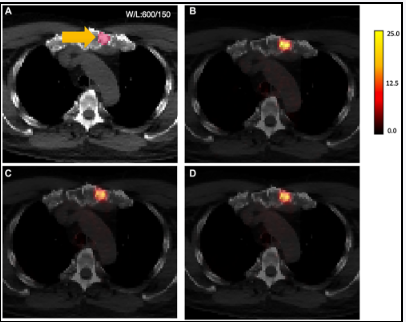DL-Based Algorithm Produces Attenuation-Corrected PET Images
Images

A new research paper proposes that an artificial intelligence (AI) tool can produce attenuation-corrected PET (AC-PET) images from non-attenuation-corrected PET (NAC-PET) images to reduce the need for low-dose CT scans. Published in Oncotarget, the authors wrote, “AI-generated PET images have clinical potential for reducing the need for CT scans for attenuation correction while preserving quantitative markers and image quality in prostate cancer patients.”
A deep-learning (DL) algorithm based on 2D Pix-2-Pix generative adversarial network (GAN) architecture was developed from paired AC-PET and NAC-PET images. 18F-DCFPyL PSMA (prostate-specific membrane antigen) PET-CT studies from 302 prostate cancer patients, split into training, validation, and testing cohorts (n = 183, 60, 59, respectively). Models were trained with two normalization strategies: Standard Uptake Value (SUV)-based and SUV-Nyul-based. Scan-level performance was evaluated by normalized mean square error (NMSE), mean absolute error (MAE), structural similarity index (SSIM), and peak signal-to-noise ratio (PSNR). Lesion-level analysis was performed in regions-of-interest prospectively from nuclear medicine physicians. SUV metrics were evaluated using intraclass correlation coefficient (ICC), repeatability coefficient (RC), and linear mixed-effects modeling.
Median NMSE, MAE, SSIM, and PSNR were 13.26%, 3.59%, 0.891, and 26.82, respectively, in the independent test cohort. ICC for SUVmax and SUVmean were 0.88 and 0.89, which indicated a high correlation between original and AI-generated quantitative imaging markers. Lesion location, density (Hounsfield units), and lesion uptake were all shown to impact relative error in generated SUV metrics (all p < 0.05).
The authors wrote, “The Pix-2-Pix GAN model for generating AC-PET demonstrates SUV metrics that highly correlate with original images. AI-generated PET images show clinical potential for reducing the need for CT scans for attenuation correction while preserving quantitative markers and image quality.”